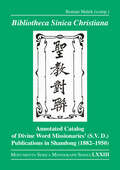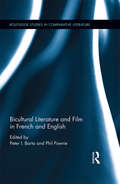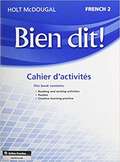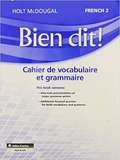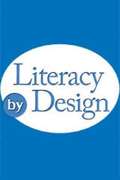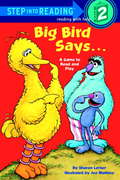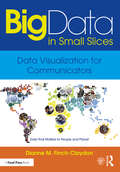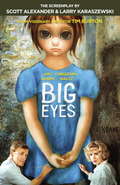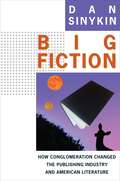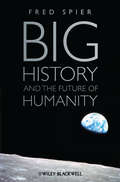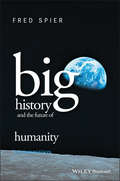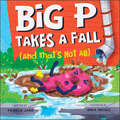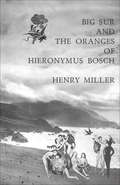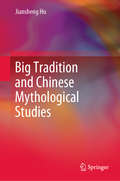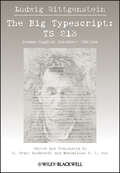- Table View
- List View
Bibliotheca Sinica Christiana: Annotated Catalog of Divine Word Missionaries’ (S.V.D.) Publications in Shandong (1882–1950) (Monumenta Serica Monograph Series)
by Roman MalekThe present work is a comprehensive catalog of publications that were produced and printed by the Divine Word Missionaries (Societas Verbi Divini, S.V.D.) in Shandong province, China. It was compiled by the late Prof. Dr. Roman Malek, S.V.D. (1951–2019), an internationally renowned expert for the history of Christianity in China and former director and editor-in-chief of the Monumenta Serica Institute (MSI) in Sankt Augustin, Germany. The catalog comprises nearly 400 entries, arranged in alphabetical order according to the original titles, in Chinese, German or Latin, and occasionally in English. Each entry provides detailed bibliographical information, excerpts from the book information included in the contemporary editions of the Catalogus Librorum of the S.V.D. Mission Press, a short explanation in English on the respective title and a Table of Contents. The S.V.D. publications cover a broad range of fields, including apologetic and catechetical material, e.g., reprints of works of the old China mission, books for teaching the faith and prayer books; biblical materials, i.e., translations from and works on the Bible; educational material, such as textbooks for the schools run by the S.V.D. in Shandong; dictionaries and grammars for Chinese, German and Latin; Catholic periodicals; books on Chinese culture; hymn books; and finally, materials for evangelization (posters, pictures, etc.). The Bibliotheca Sinica Christiana makes an important contribution to documenting the printing activities of a specific Catholic missionary society, the S.V.D., in China in the late nineteenth and first half of the twentieth century. It aims at stimulating further research into the S.V.D. China mission and into the history of religious printing in the modern era in China at large.
Bicultural Literature and Film in French and English (Routledge Studies in Comparative Literature)
by Phil Powrie Peter I. BartaThis book focuses on literature and cinema in English or French by authors and directors not working in their native language. Artists with hybrid identities have become a defining phenomenon of contemporary reality following the increased mobility between civilisations during the postcolonial period and the waves of emigration to the West. Cinema and prose fiction remain the most popular sources of cultural consumption, not least owing to the adaptability of both to the new electronic media. This volume considers cultural products in English and French in which the explicitly multi-focal representation of authors' experiences of their native languages/cultures makes itself conspicuous. The essays explore work by the peripheral and those without a country, while problematising what might be meant by the widely used but not always well-defined term ‘bicultural’. The first section looks at films by such well-known filmmakers working in France as Bouchareb, Kechiche, Legzouli and Dridi, as well as the animated feature Persepolis. Here the focus is on the representation of human experience in spatial terms, exploring the appropriation of territory cohabited by ‘local’ people, newcomers and their children, haunted by the cultural memories of distant places. The second part is devoted to multicultural authors whose ‘native’ language was English, Russian, Polish, Hungarian or Spanish (Beckett, Herzen, Voyeikova, Triolet, Conrad, Hoffmann, Kristof, Dorfman), and their creative engagement with difference. A study of the emergence of multilingual writing in Montaigne and an autobiographical essay by Elleke Boehmer on growing up surrounded by English, Dutch, Afrikaans and Zulu frame the volume's chapters. The collection relishes the freedom provided by liberation from the confines of one language and culture and the delight in creative multilingualism. This book will be of significant interest to those studying the subject of biculturalism, as well as the fields of comparative literature and cinema.
Biculturalism and Spanish in Contact: Sociolinguistic Case Studies (Routledge Studies in Hispanic and Lusophone Linguistics)
by Eva Núñez MéndezBiculturalism and Spanish in Contact: Sociolinguistic Case Studies provides an original and modern analysis of the field of language change and variation with a specific focus on Spanish as a language in contact. This edited collection, focuses on diachronic variationist approaches to the Spanish language in contact with other languages from a historical sociolinguistics perspective. Topics covered include: language planning and policies, education, biculturalism, linguistic variation issues in the Spanish of the southwestern United States, and other socio-historical and anthropological aspects of the contact situation.
Bien dit! 2, Cahier d'activités: Reading and Writing Activities Workbook, Student Edition, Level 2 (Bien Dit! Ser.)
by Holt McDougalNIMAC-sourced textbook
Bien dit! 2, Cahier de vocabulaire et grammaire: Vocabulary and Grammar Workbook, Student Edition, Level 2 (Bien Dit! Ser.)
by Holt McDougalNIMAC-sourced textbook
Big Bird Says... (Step into Reading)
by Sesame StreetIllus. in full color. Funny commands such as "Quack like a duck" enliven Big Bird's rhyming Sesame Street version of Simon Says. From the Trade Paperback edition.
Big Data in Small Slices: Analysis and Visualization for Journalists and Communications Professionals
by Dianne M. Finch-ClaydonThis book offers an engaging and accessible introduction to data visualization for communicators, covering everything from data collection and analysis to the creation of effective data visuals. Straying from the typical "how to visualize data" genre often written for technical audiences, Big Data in Small Slices offers those new to data gathering and visualization the opportunity to better understand data itself. Using the concept of the "data backstory," each chapter features discussions with experts, from marine scientists to pediatricians and city government officials, who produce datasets in their daily work. The reader is guided through the process of designing effective visualizations based on their data, delving into how datasets are produced and vetted, and how to assess their weaknesses and strengths, ultimately offering readers the knowledge needed to produce their own effective data visuals. This book is an invaluable resource for anyone interested in data visualization and storytelling, from journalism and communications students to public relations professionals. A detailed accompanying website features additional material for readers, including links to all the original datasets used in the text, at www.bigdatainsmallslices.com
Big Eyes
by Tyler Stallings Larry Karaszewski Scott AlexanderWITH AN INTERVIEW WITH MARGARET KEANEThe full screenplay by award-winning Ed Wood writers Scott Alexander and Larry Karaszewski for acclaimed director Tim Burton's film Big Eyes, starring Amy Adams and Christoph Waltz.A rare close-up look into a corner of the 1950s and '60s art world and a perfectly observed account of a dysfunctional marriage, Big Eyes tells the true story of Margaret Keane, an artist who lived and worked in virtual slavery while her husband, Walter, gained fame and fortune passing himself off as the creator of his wife's wildly popular paintings. The story of their toxic relationship would culminate in a Hawaiian courtroom, as Margaret ultimately fights to save her name and reclaim her art, during a heated public court battle. This edition, illustrated with photos throughout, contains the complete screenplay, an afterword by the screenwriters, and an interview with Margaret Keane, the real-life subject of Big Eyes, by Tyler Stallings.
Big Fiction: How Conglomeration Changed the Publishing Industry and American Literature (Literature Now)
by Dan SinykinIn the late 1950s, Random House editor Jason Epstein would talk jazz with Ralph Ellison or chat with Andy Warhol while pouring drinks in his office. By the 1970s, editors were poring over profit-and-loss statements. The electronics company RCA bought Random House in 1965, and then other large corporations purchased other formerly independent publishers. As multinational conglomerates consolidated the industry, the business of literature—and literature itself—transformed.Dan Sinykin explores how changes in the publishing industry have affected fiction, literary form, and what it means to be an author. Giving an inside look at the industry’s daily routines, personal dramas, and institutional crises, he reveals how conglomeration has shaped what kinds of books and writers are published. Sinykin examines four different sectors of the publishing industry: mass-market books by brand-name authors like Danielle Steel; trade publishers that encouraged genre elements in literary fiction; nonprofits such as Graywolf that aspired to protect literature from market pressures; and the distinctive niche of employee-owned W. W. Norton. He emphasizes how women and people of color navigated shifts in publishing, arguing that writers such as Toni Morrison allegorized their experiences in their fiction.Big Fiction features dazzling readings of a vast range of novelists—including E. L. Doctorow, Judith Krantz, Renata Adler, Stephen King, Joan Didion, Cormac McCarthy, Chuck Palahniuk, Patrick O’Brian, and Walter Mosley—as well as vivid portraits of industry figures. Written in gripping and lively prose, this deeply original book recasts the past six decades of American fiction.
Big History and the Future of Humanity
by Fred SpierBig History and the Future of Humanity presents an original theoretical approach that makes "big history" - the placing of the human past within the history of life, the Earth, and the Universe -- accessible to general readers while revealing insights into what the future may hold for humanity.Provides an accessible and original overview of the entire sweep of history that places human history within the history of life, the Earth, and the Universe Features an original theory of "big history" which explains all of history and opens up an entirely new interdisciplinary research agenda Offers new insights into the future of humanity by better understanding the pastPresents a new approach to complexity studies, which takes into account the greatest galaxy clusters as well as the tiniest sub-atomic particles
Big History and the Future of Humanity
by Fred SpierFeaturing a variety of updates and revisions, Big History and the Future of Humanity, Second Edition, presents an accessible and original overview of the entire sweep of history from the origins of the universe and origins of life on Earth up to the present day. Provides an accessible and original overview of the entire sweep of history that places human history within the context of the history of life, the Earth, and the universe Offers new insights into the future of humanity by providing a better understanding of the past Features a variety of updates and revisions that include increased coverage of key concepts such as the emergence of human behaviour, the development of value systems, and patterns of complexity in Big History Incorporates a variety of 'little big histories' that aid readers in recognizing how big history concepts can relate to their daily lives Instructor resources from the author will be available online upon publication Find additional resources from the author online at www.bighistory.info
Big P Takes a Fall (and That's Not All)
by Pamela JaneFrom the team that bought you C Jumped over Three Pots and a Pan and Landed Smack in the Garbage Can comes another fun, wild, wacky rhyming introduction to the alphabet! Can small b, the only lowercase letter in the uppercase school, find a way to save the day? When a rainstorm washes away the bridge in front of the school, the letters must warn the school bus to STOP before it reaches the raging river. But Big P has taken a fall! How can the alphabet spell “STOP" without P? Watch b stand up—and upside down—for herself! Ideal for STEAM curriculums, this entertaining alphabet adventure sparks imagination, curiosity, and suspense while teaching problem-solving, creative skills, and teamwork. Like the first book from this author and illustrator duo, C Jumped over Three Pots and a Pan and Landed Smack in the Garbage Can!, Big P Takes a Fall is a unique alphabet story that draws young readers into the exciting world of language and letters. Introducing children to reading and rhyme has never been so wild, wacky, and laugh-out loud funny!
Big Sur and the Oranges of Hieronymus Bosch
by Henry MillerIn his great triptych "The Millennium" Bosch used oranges and other fruits to symbolize the delights of Paradise. Whence Henry Miller's title for this, one of his most appealing books; first published in 1957, it tells the story of Miller's life on the Big Sur, a section of California coast where he lived for fifteen years. Big Sur is the portrait of a place--one of the most colorful in the U.S.--and of the extraordinary people Miller knew there: writers (& writers who didn't write), mystics seeking truth in meditation (& the not-so-saintly looking for sex-cults or celebrity), sophisticated children & adult innocents; geniuses, cranks & the unclassifiable. Henry Miller writes with a buoyancy & brimming energy that are infectious. He has a fine touch for comedy. But this is also a serious book--the testament of a free spirit who has broken through the restraints & cliches of modern life to find within himself his own kind of paradise.
Big Tradition and Chinese Mythological Studies
by Jiansheng HuThis book focuses on reinterpreting mythical China from the perspective of the cultural theory of big tradition. It is divided into two parts: the first explains the theoretical development and features of the Chinese version of big tradition, identifying the differences between the Eastern and Western cultural traditions (big tradition and great tradition). The second part then reinterprets the core values and mythical ideas of Chinese civilization and traditional culture from the perspective of big tradition.Moving beyond the small tradition of text centrism and using new methods and materials, the book reveals the original meaning and the cultural coding function of big tradition during the preliterate period. Drawing on integrated evidence from literature handed down from ancient times, oral and intangible cultural heritage, tangible culture, cross-cultures, image culture and unearthed documents, the book interprets Chinese cultural traditions and spiritual values from local, archaeological, experiential and survival perspectives, to help readers better understand the mythical codes and genes of early Chinese culture.
Big Typescript
by Ludwig Wittgenstein C. Grant Luckhardt Maximilian E. AueLong awaited by the scholarly community, Wittgenstein's so-called "Big Typescript" (von Wright Catalog # TS 213) is presented here in an en face English-German scholar's edition. Presents scholar's edition of important material from 1933, Wittgenstein's first efforts to set out his new thoughts after the publication of the "Tractatus Logico Philosophicus" Includes indications to help the reader identify Wittgenstein's numerous corrections, additions, deletions, alternative words and phrasings, suggestions for moves within the text, and marginal comments
Big Words for Little Geniuses (Big Words for Little Geniuses #1)
by James Patterson Susan Patterson Hsinping PanThere's no "gobbledygook" in this clever picture book by James and Susan Patterson, with each letter of the alphabet providing a sophisticated word and definition for "Lilliputian" children to learn. Adults will appreciate the "juxtaposition" of young kids properly using impressive words that many grownups may not have heard of before! Includes a list of extra words in the back for further learning.Delightfully whimsical artwork by artist Hsinping Pan brings these big words to life, making this early foray into learning fun for all.
Big Words for Little People
by Jamie Lee CurtisI know some Big Words. I'll teach them to you. Although you are small, you can use Big Words too. Big Words aren't scary. They're big fun to learn. I was taught once and now it's your turn. The eighth hilarious picture book by the #1 New York Times bestselling team of Jamie Lee Curtis and Laura Cornell helps little people communicate in a big person's world. With grown-up words like cooperate, respect, patience and considerate, a big, boisterous and zany family celebrates the power of language and discovers that words--big or little--are the bridge that connects us all.
Big and Little Histories: Sizing Up Ethics in Historiography
by Anne Martin Marnie Hughes-WarringtonThis book introduces students to ethics in historiography through an exploration of how historians in different times and places have explained how history ought to be written and how those views relate to different understandings of ethics. No two histories are the same. The book argues that this is a good thing because the differences between histories are largely a matter of ethics. Looking to histories made across the world and from ancient times until today, readers are introduced to a wide variety of approaches to the ethics of history, including well-known ethical approaches, such as the virtue ethics of universal historians, and utilitarian approaches to collective biography writing while also discovering new and emerging ideas in the ethics of history. Through these approaches, readers are encouraged to challenge their ideas about whether humans are separate from other living and non-living things and whether machines and animals can write histories. The book looks to the fundamental questions posed about the nature of history making by Indigenous history makers and asks whether the ethics at play in the global variety of histories might be better appreciated in professional codes of conduct and approaches to research ethics management. Opening up the topic of ethics to show how historians might have viewed ethics differently in the past, the book requires no background in ethics or history theory and is open to all of those with an interest in how we think about good histories.
Big, Bigger, Biggest!
by Nancy CoffeltI'm big. I'm bigger. I'M BIGGEST. How would you describe a hippopotamus? Big might be the first word that comes to mind. What about a whale? Gigantic? Immense? How about enormous! What if you had to find a word for the biggest animal of them all--a dinosaur. Mammoth? Humongous? Colossal! With bright pictures of animals in all shapes aid sizes, this terrific read-aloud introduces young children to the language of comparisons, synonyms, and antonyms.
Big-Time Shakespeare
by Michael D. BristolShakespeare has made the big time. No less than the Beatles or Liberace, Elvis Presley or Mick Jagger, Shakespeare is big-time in the idiomatic sense of cultural success and widespread notoriety. Not only has he achieved canonical status, Shakespeare is a contemporary celebrity. His artistic distinction and aptitude for controversy constantly keeps his name in the public eye. Bristol debates Shakespeare's cultural authority, and clarifies the semantics of his name in our culture. Big-Time Shakespeare suggests his plays represent the pathos of our civilisation with extraordinary force and clarity. Shakespeare's contradictory understanding of the social and cultural past is also examined with close analysis of The Winter's Tale, Othello, and Hamlet.
Bigger Words for Little Geniuses (Big Words For Little Geniuses Ser. #1)
by James Patterson Susan PattersonKids are never too young to start learning! With big, fun-to-say words for every letter of the alphabet, this book will deliver read-aloud laughs while teaching something new to both parent and child.Do you know your gnashnabb from your widdershins? When was the last time you saw something orchidaceous or dolichopodous? Learn all these sophisticated words and more in this brilliant picture book by bestselling authors James and Susan Patterson! With bright, imaginative artwork by Hsinping Pan, each word offers a definition and pronunciation to give your little genius--and you!--the most impressive vocabulary ever. Includes a list of extra words in the back for further learning.
Bigger, Brighter, Louder: 150 Years of Chicago Theater as Seen by "Chicago Tribune" Critics
by Chris JonesThe first known Chicago Tribune theater review appeared on March 25, 1853. An anonymous notice, it shared the page with two other announcements--one about a pair of thousand-pound hogs set to be slaughtered and another trumpeting the largest load of lumber ever to leave Chicago. "And thus Chicago's priorities were starkly laid out right there on that page," begins Chris Jones in the introduction to this eyewitness cultural history. "Hog butcher for the world and windy self-promoter, specializing in commerce-driven superlatives. The arts came a poor third. Critics, and the artists they covered, would rail against that perceived set of civic priorities for years. " The Chicago of today, on the other hand, is regarded as one of the world's premier cities for theater, and no one has had a more consistent front-row seat to its ascendance than the Chicago Tribune theater critics. Bigger, Brighter, Louder weaves together more than 150 years of Tribune reviews into a compelling narrative, pairing full reviews with commentary and history. With a sharp eye for telling details and a keen sense of historical context, Jones, longtime chief Tribune theater critic, takes readers through decades of highs and lows, successes and failures. The book showcases fascinating early reviews of actors and shows that would go on to achieve phenomenal success, including a tryout of A Raisin in the Sun with newcomer Sidney Poitier and the first major review of The Producers. It also delves into the rare and the unusual, such as a previously unpublished Tennessee Williams interview and a long conversation with Edward Albee's mother. With reviews from Claudia Cassidy, Peregine Pickle, William Leonard, and more, many never collected before, Bigger, Brighter, Louder offers a unique lasting record of an ephemeral art and a riveting look at the history behind Chicago's rise to theatrical greatness.
Bigger: A Literary Life (Black Lives)
by Trudier HarrisA biography of Native Son&’s Bigger Thomas that examines his continued relevance in debates over Black men and the violence of racism Bigger Thomas, the central figure in Richard Wright&’s novel Native Son (1940), eludes easy categorization. A violent and troubled character who rejects the rules of society, Bigger is both victim and perpetrator, damaged by racism and segregation on the South Side of Chicago, seemingly raping and killing without regrets. His story has electrified readers for more than eight decades, and it continues to galvanize debates around representation, respectability, social justice, and racism in American life. In this book, distinguished scholar Trudier Harris examines the literary life of Bigger Thomas from his birth to the current day. Harris explores the debates between Black critics and Communist artists in the 1930s and 1940s over the &“political novel,&” the censorship of Native Son by white publishers, and the work&’s initial reception—as well as interpretations from Black feminists and Black Power activists in the decades that followed, up to the novel&’s resonance with the Black Lives Matter movement today. Bigger, Harris argues, represents the knotted heart of American racism, damning and unsettling, and still very much with us.
